Companies face growing demands to refine their energy use as prices soar. With environmental issues becoming more pressing, business intelligence (BI) is playing a critical role in uncovering potential energy reductions and maximizing efficiency in ecofriendly operations. Utilizing BI technology allows organizations of all kinds—not just energy producers—to detect wasteful practices, project future energy needs, and make informed choices that lead to cost savings while simultaneously advancing their commitment to social and environmental responsibility. This blog examines BI’s pivotal role in optimizing energy consumption. Let’s dive in!
Advantages of monitoring energy consumption
Cost savings
Efficient energy monitoring allows businesses to identify areas of energy waste and implement proper strategies to reduce consumption. This leads to significant cost savings over time as energy-efficient practices translate directly into lower utility bills.
Improved budgeting and planning

Accurate data on energy consumption facilitates better budgeting and financial planning for companies. They can allocate their resources more effectively by knowing how much to budget for energy expenses. This predictability contributes to overall financial stability.
Predictive maintenance
Continuous monitoring lowers downtime and promotes proactive maintenance by enabling the early identification of equipment problems, thereby extending the lifespan of equipment.
Enhanced equipment performance

Monitoring energy consumption provides insight into the performance of various equipment and systems. Organizations can make informed decisions about upgrades or replacements to optimize energy efficiency by identifying underperforming assets.
Benchmarking and performance metrics
Energy monitoring enables benchmarking against industry standards and performance metrics. This comparative analysis helps organizations set realistic energy efficiency goals, track progress, and stay competitive in terms of sustainability.
Resilience to market fluctuations

Energy-efficient practices provide a level of resilience to fluctuations in energy prices, helping organizations navigate market uncertainties.
Common setbacks in energy consumption monitoring
Effective energy consumption monitoring is crucial for businesses aiming to optimize their energy efficiency and reduce their environmental impact. However, various setbacks can hinder the process. They include:
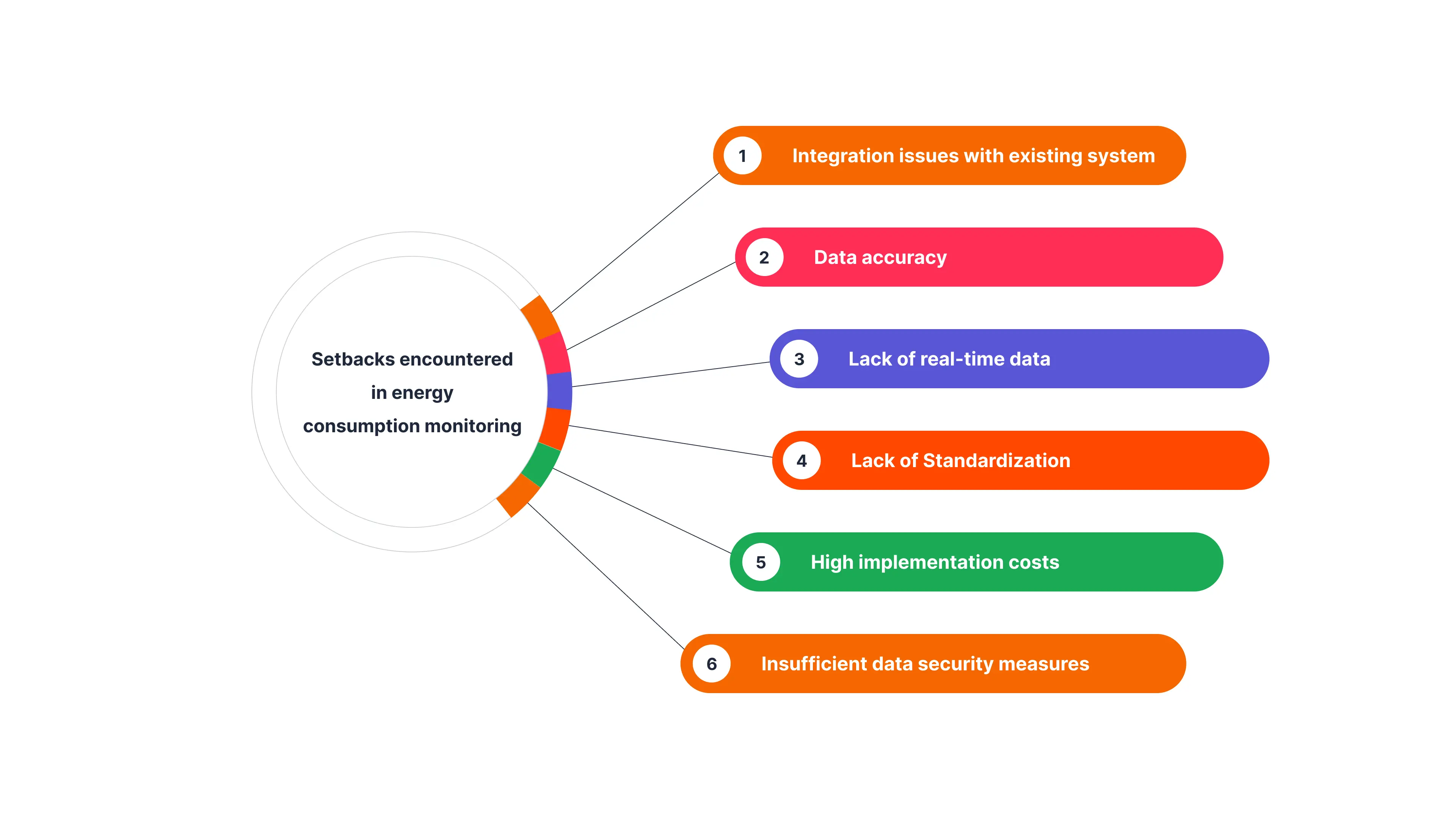
- Lack of real-time data: Delayed or infrequent updates in data can limit the ability to respond promptly to changes in energy consumption patterns, hindering real-time optimization.
- Poor data accuracy and precision: Inaccurate or imprecise data, often resulting from incorrectly calibrated measurement devices, undermines the reliability of energy consumption records.
- Integration issues with existing systems: Challenges arise when energy monitoring systems struggle to integrate seamlessly with existing infrastructure, leading to disruptions in data flow.
- Insufficient data security measures: Inadequate cybersecurity measures pose risks of unauthorized access to energy consumption data, compromising privacy and integrity.
- High implementation costs: The significant up-front costs associated with adopting advanced energy monitoring systems can be a barrier for organizations, especially smaller ones.
- Lack of standardization: Inconsistencies in data formats and measurement units across different systems can create challenges in aggregating and analyzing energy consumption data.
How BI tools aid in overcoming setbacks in energy consumption monitoring
BI tools provide insights to overcome setbacks in monitoring energy consumption and enhancing energy management efficiency. Here’s how BI tools can mitigate common setbacks:
Identify energy-intensive areas
Identifying locations with high energy consumption can be challenging. BI tools help energy producers identify locations with the highest energy consumption by analyzing data granularly. This gives energy-reduction specialists the ability to prioritize efforts based on population and account for different consumption rates based on local climates and weather patterns.
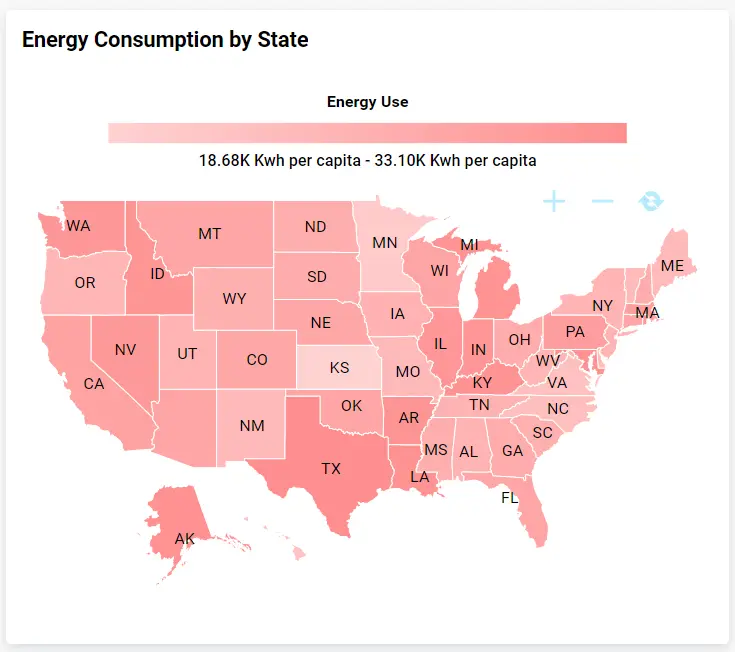
Evaluating energy consumption over time
BI tools empower organizations to scrutinize historical energy consumption trends, pinpointing factors such as inefficiencies in HVAC systems, outdated lighting fixtures, and fluctuations in occupancy that contribute to these trends. From this data, organizations can implement corrective measures.
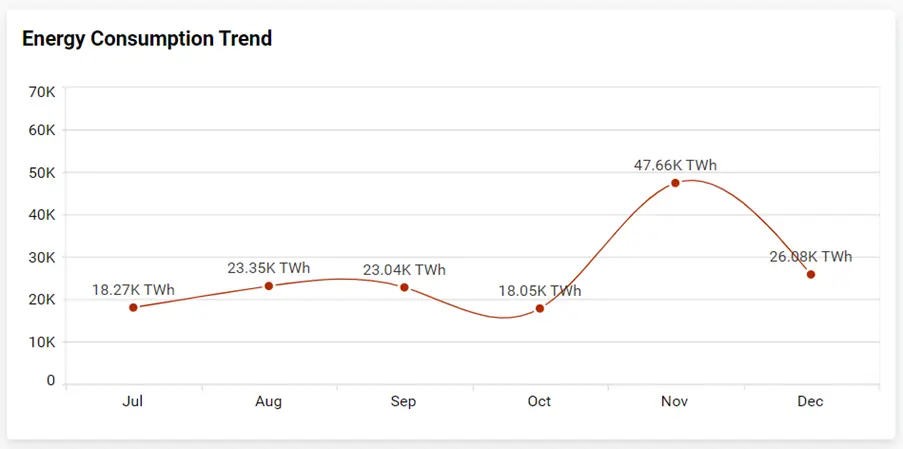
Set benchmarks and targets
Establishing realistic energy consumption targets without benchmarks is a unique challenge, but it is one that can be addressed by using BI tools to compare estimated versus actual consumption. This active comparison and visualization enhance performance evaluations and helps organizations set achievable targets for energy reduction.
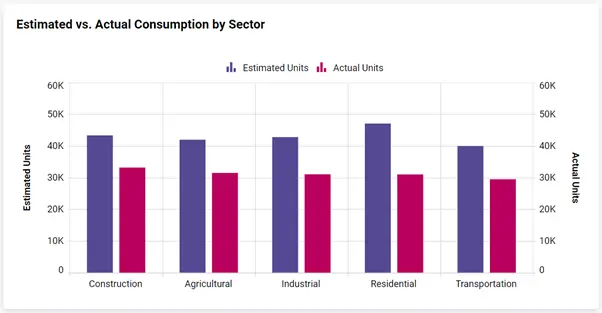
Develop predictive models for energy consumption
BI tools use machine learning to create predictive models, incorporating historical data, weather patterns, occupancy forecasts, and other data that significantly factors into energy consumption. These models inform procurement strategies and eliminating some uncertainty in predicting future energy consumption patterns for more effective capacity planning and proactive energy management.
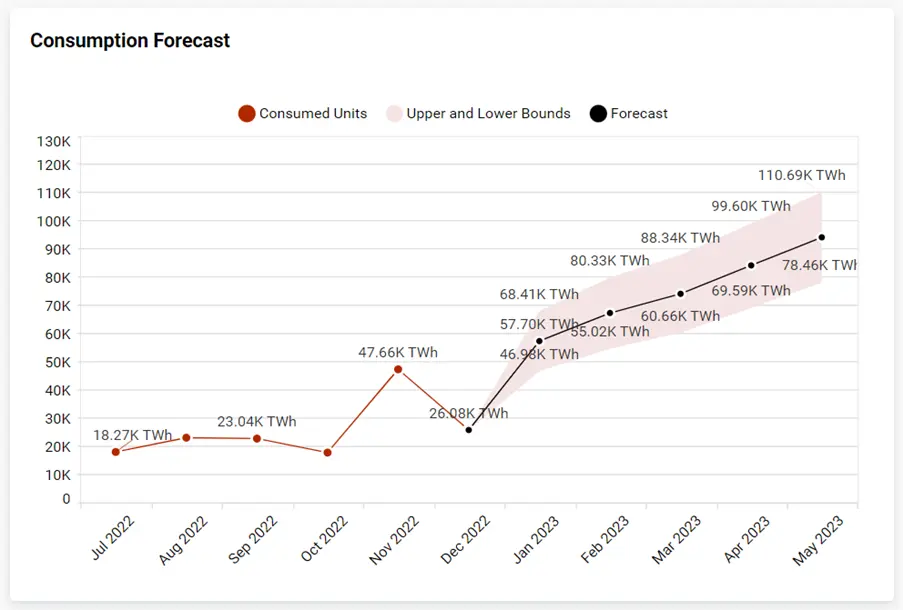
Identify anomalies and potential leaks
Assessing the proportion of energy used versus wasted can be quite difficult, but BI tools can be used to visualize energy efficiency and make it easier and faster to comprehend. This enables organizations to identify anomalies in energy consumption patterns and employ loss prevention measures.
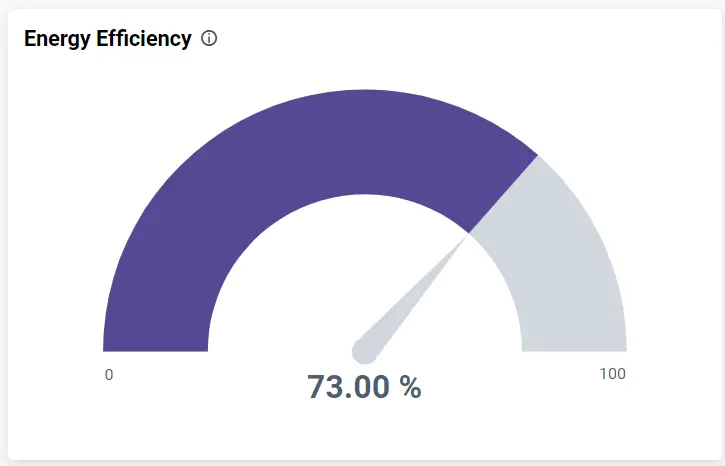
Tracking energy consumption analytics with BI tools
Tracking energy consumption analytics with the right BI tools is crucial to obtaining actionable insights. Discover helpful tips for selecting the ideal BI tool for your energy data analysis by reading our blog post, “8 Tips for Choosing the Right BI Tool.”
A BI dashboard for energy production and consumption data allows stakeholders to analyze trends, identify efficiency improvements, and promote sustainability. Utilizing BI tools in the energy industry improves management by enabling informed decisions and visualizing key metrics like power consumption patterns and environmental impact, as showcased in the following dashboard.
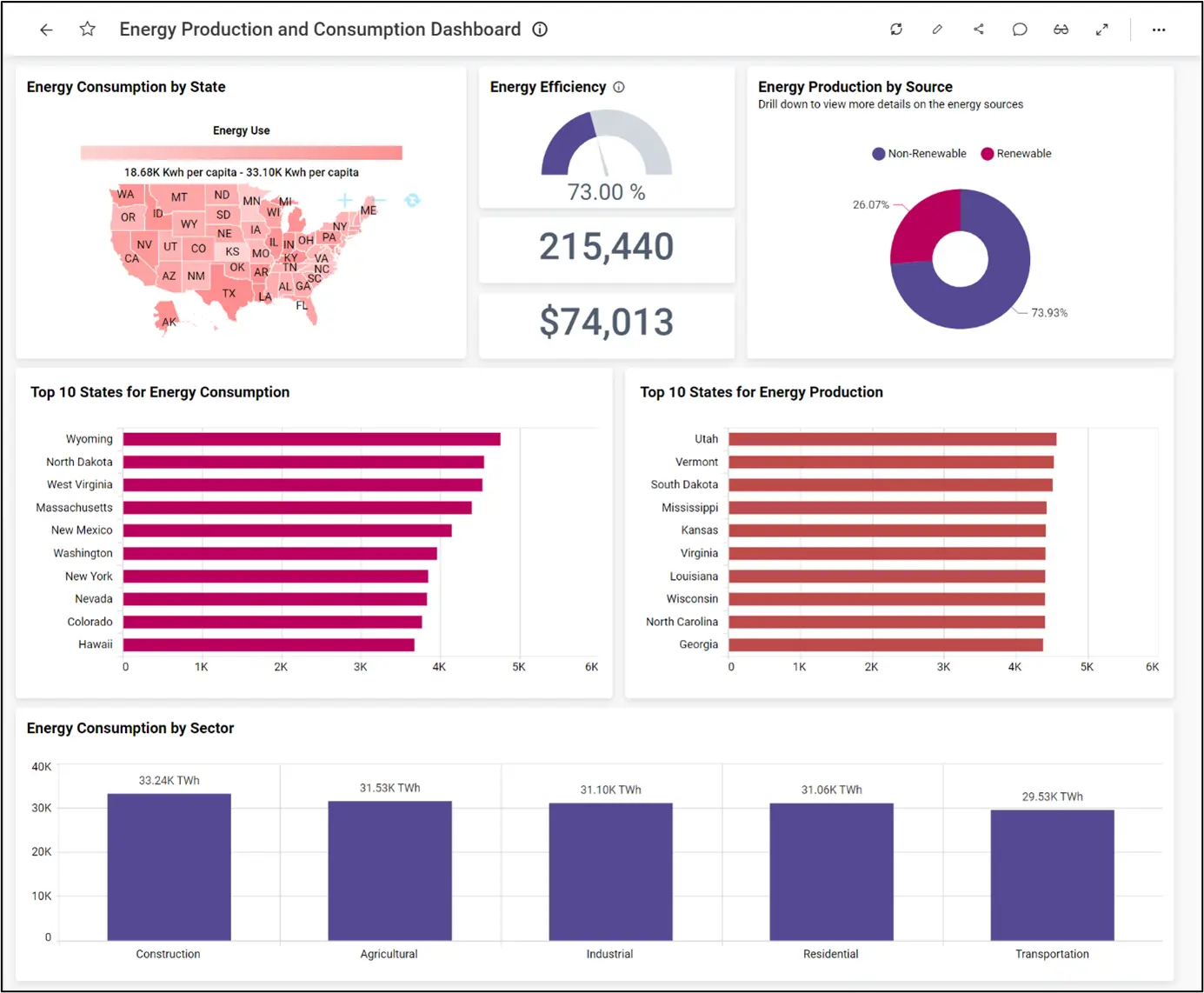
This Bold BI® Energy Production and Consumption Dashboard is a visually engaging tool for managing energy consumption metrics. Its capabilities can improve accuracy and efficiency in developing energy consumption analytics by presenting data in an eye-catching and easy-to-use interface, streamlining the data analysis process considerably. Check out the dashboard to learn more about the key metrics and KPIs for energy consumption.
Now, embrace the future of energy consumption analysis by incorporating these advanced BI strategies into your approach. Harness data-driven insights to optimize energy usage, reduce costs, and promote sustainable practices.
Start Embedding Powerful Analytics
Try out all the features of Bold BI with 30-day free trial.
You can also check out our blog post, “Monitor Energy Consumption and Save Money with Embedded Analytics,” for more in-depth insights and strategies on how embedded analytics can revolutionize energy management. If you are new to Bold BI, we invite you to sign up for a free trial on our website.



















